
How to Use MQ-2 SENSOR: Examples, Pinouts, and Specs
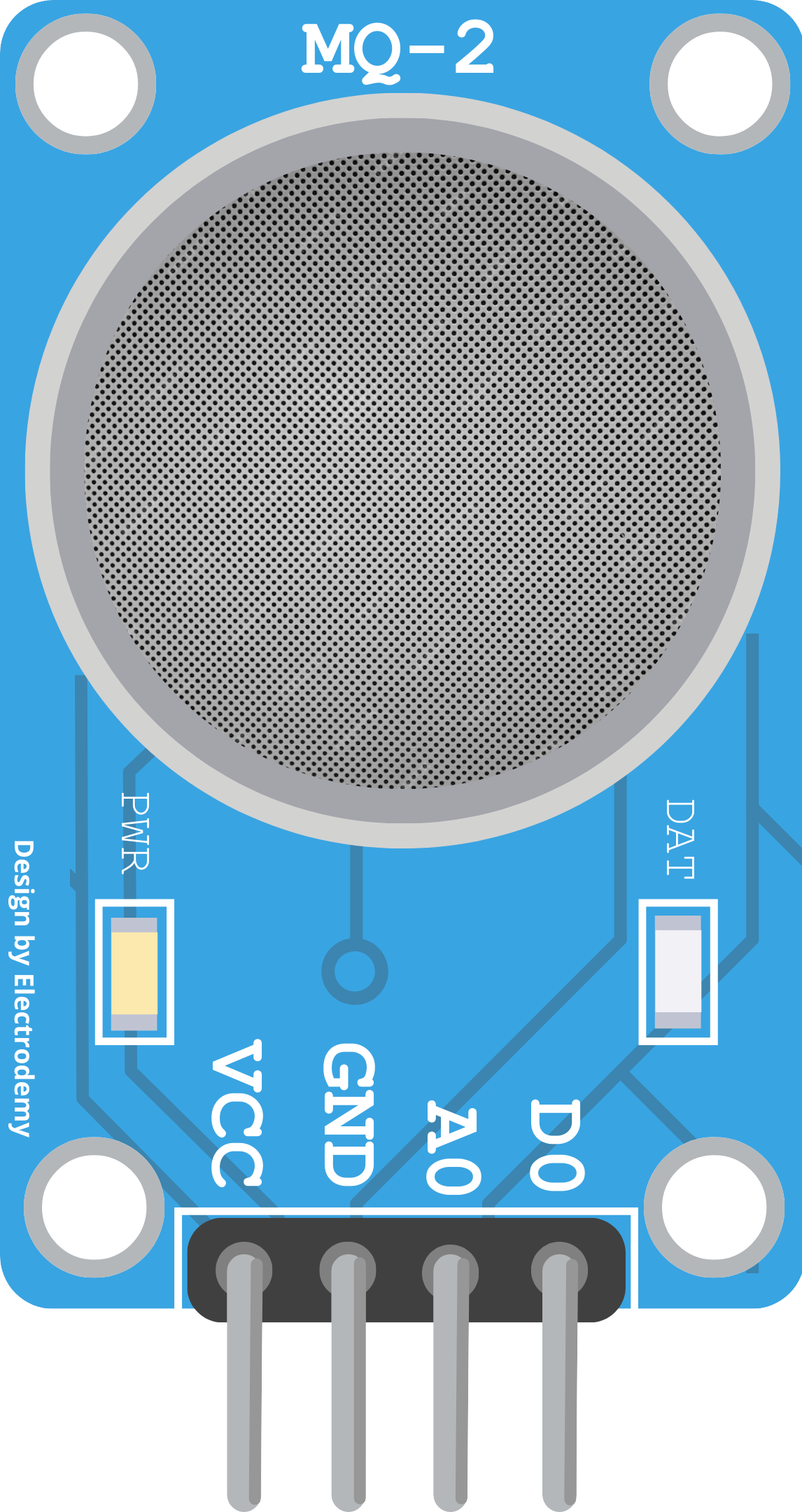
 Design with MQ-2 SENSOR in Cirkit Designer
Design with MQ-2 SENSOR in Cirkit DesignerIntroduction
The MQ-2 sensor module is a versatile gas detection device capable of identifying various combustible gases, particularly methane, butane, propane, and LPG (liquefied petroleum gas). It is widely used in safety applications such as gas leak detection in household and industrial settings, as well as in air quality monitoring systems. The sensor's high sensitivity and fast response time make it an essential component in preventing potential hazards related to gas leaks.
Explore Projects Built with MQ-2 SENSOR
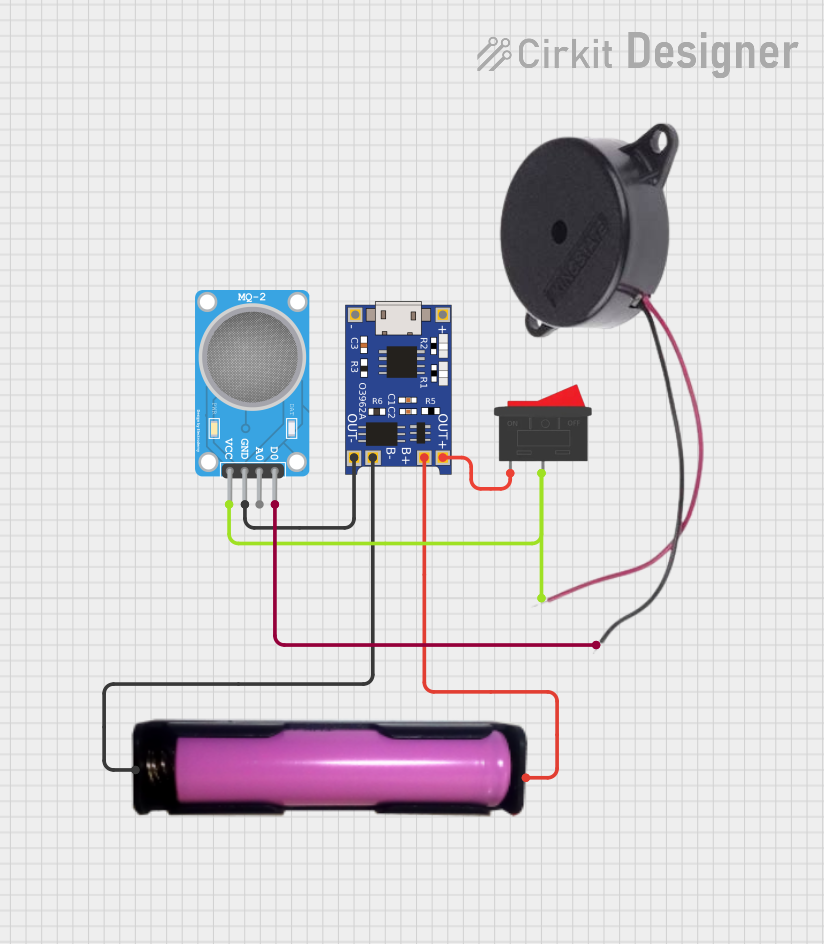
 Open Project in Cirkit Designer
Open Project in Cirkit Designer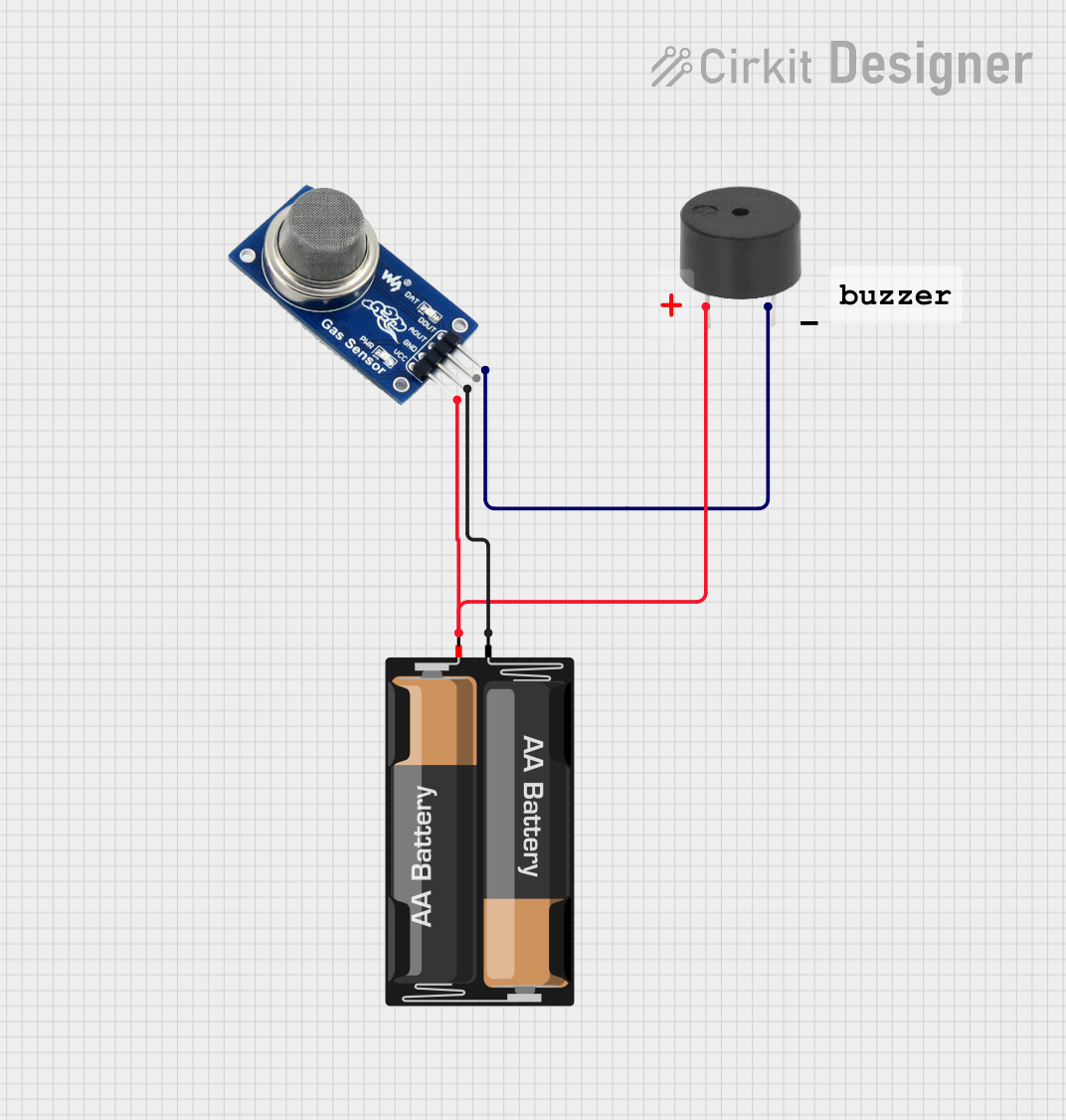
 Open Project in Cirkit Designer
Open Project in Cirkit Designer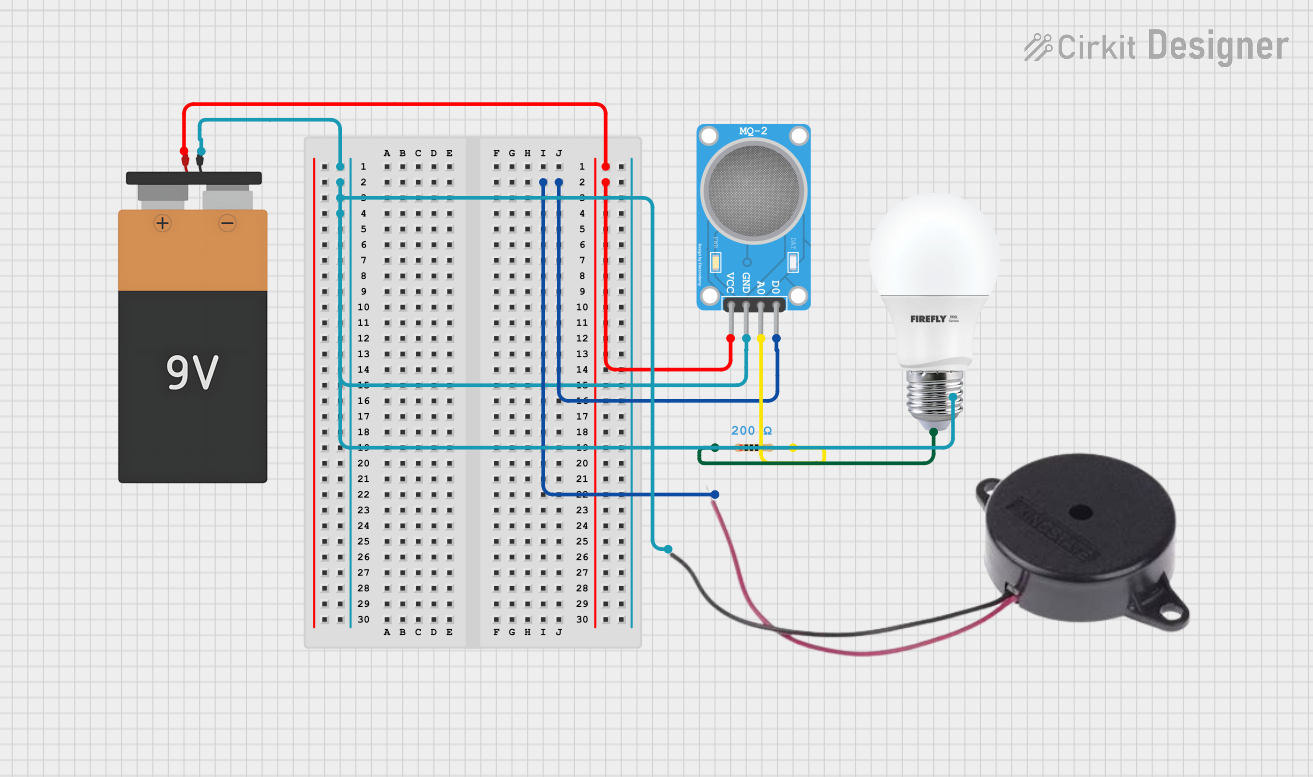
 Open Project in Cirkit Designer
Open Project in Cirkit Designer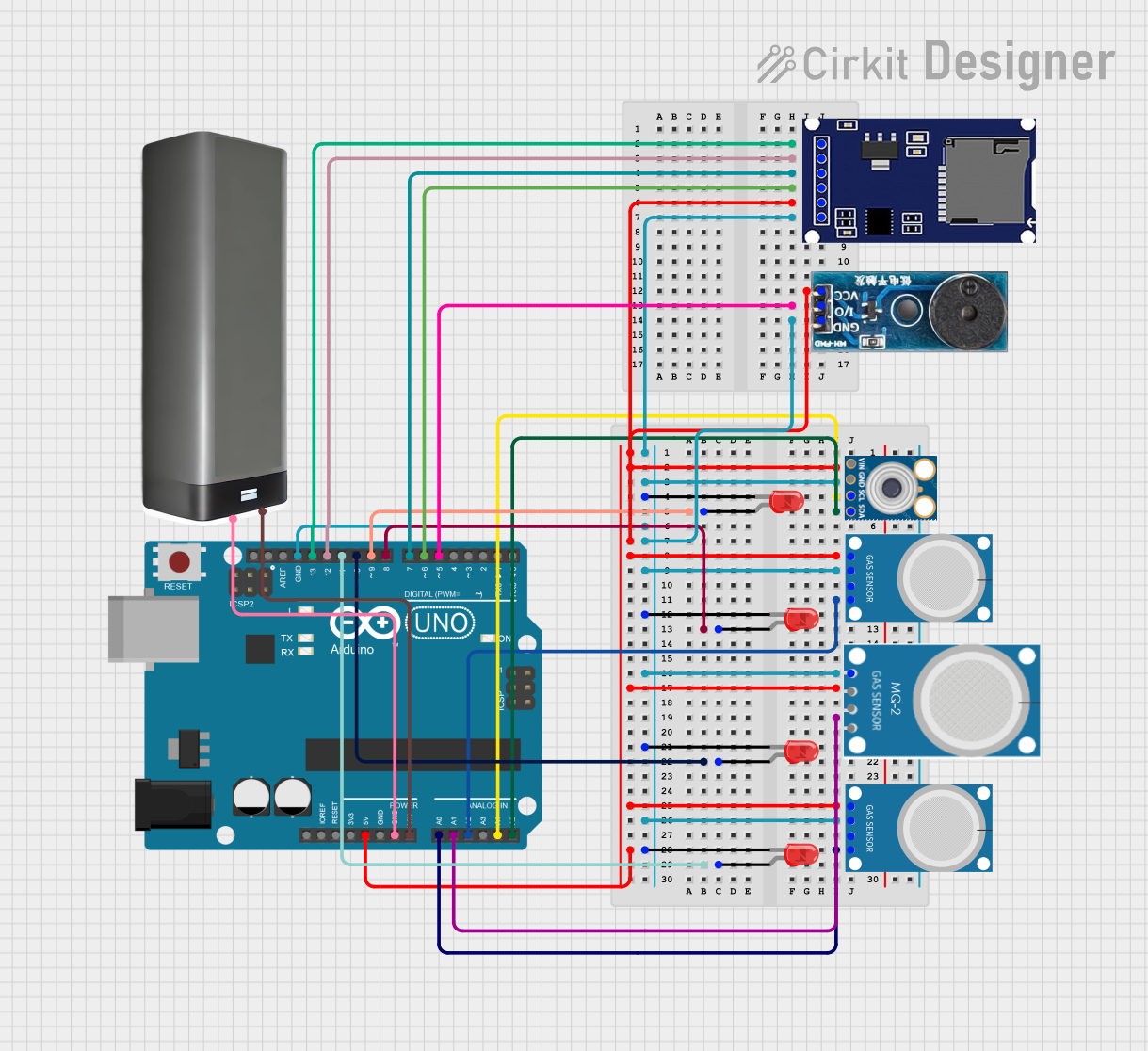
 Open Project in Cirkit Designer
Open Project in Cirkit DesignerExplore Projects Built with MQ-2 SENSOR

 Open Project in Cirkit Designer
Open Project in Cirkit Designer
 Open Project in Cirkit Designer
Open Project in Cirkit Designer
 Open Project in Cirkit Designer
Open Project in Cirkit Designer
 Open Project in Cirkit Designer
Open Project in Cirkit DesignerTechnical Specifications
Key Technical Details
- Sensor Type: Semiconductor
- Detection Gases: Methane, Butane, LPG, Smoke
- Concentration Range: 300 to 10000 ppm (parts per million)
- Supply Voltage: 5V DC
- Output Voltage: 0.1 to 0.3V (relative to gas concentration)
- Preheat Duration: 20 seconds
- Operating Temperature: -10 to 50°C
- Load Resistance: Adjustable via onboard potentiometer
Pin Configuration and Descriptions
| Pin Number | Pin Name | Description |
|---|---|---|
| 1 | VCC | Power supply input (5V DC) |
| 2 | GND | Ground |
| 3 | DOUT | Digital output (0V or 5V) |
| 4 | AOUT | Analog output (0.1V to 0.3V) |
Usage Instructions
Integration with a Circuit
To use the MQ-2 sensor module in a circuit:
- Connect the VCC pin to a 5V power supply.
- Attach the GND pin to the ground of the power supply.
- The AOUT pin provides an analog voltage output that is proportional to the concentration of gases. Connect this to an analog input on your microcontroller.
- The DOUT pin provides a digital output which can be set to high or low based on a threshold value. This can be connected to a digital input on your microcontroller.
Important Considerations and Best Practices
- Calibration: The MQ-2 sensor requires calibration to ensure accurate readings. Expose the sensor to clean air and adjust the onboard potentiometer until the desired threshold is reached.
- Ventilation: Ensure proper ventilation when testing the sensor to avoid harmful gas accumulation.
- Safety: Always follow safety protocols when working with combustible gases.
- Temperature and Humidity: Be aware that the sensor's readings can be affected by temperature and humidity.
Example Code for Arduino UNO
// MQ-2 Sensor Example Code
const int AOUTpin = A0; // Analog output from the sensor
const int DOUTpin = 2; // Digital output from the sensor
void setup() {
Serial.begin(9600);
pinMode(DOUTpin, INPUT);
}
void loop() {
int analogValue = analogRead(AOUTpin);
int digitalValue = digitalRead(DOUTpin);
// Convert the analog reading (which goes from 0 - 1023) to a voltage (0 - 5V)
float voltage = analogValue * (5.0 / 1023.0);
Serial.print("Analog Value: ");
Serial.print(analogValue);
Serial.print(" - Voltage: ");
Serial.print(voltage);
Serial.print("V - Digital Value: ");
Serial.println(digitalValue);
// Wait a bit before reading again
delay(1000);
}
Troubleshooting and FAQs
Common Issues
- Inconsistent Readings: If the sensor provides inconsistent readings, ensure that it has been properly calibrated and that there are no drastic changes in temperature or humidity.
- No Response to Gas: Verify that the sensor is correctly powered and that the gas concentration is within the detectable range.
- Sensor Not Heating Up: Check the power supply and connections to the VCC and GND pins.
Solutions and Tips
- Calibration: Perform calibration in an environment with a known gas concentration or clean air for more accurate readings.
- Sensor Burn-In: It is recommended to operate the sensor for 24 hours before taking critical measurements to stabilize its output.
- Avoid Contaminants: Keep the sensor away from organic solvents, paints, and other contaminants that may affect its sensitivity.
FAQs
Q: How long does the MQ-2 sensor last? A: The lifespan of the MQ-2 sensor is typically around 5 years, depending on usage and environmental conditions.
Q: Can the MQ-2 sensor detect carbon monoxide? A: The MQ-2 is primarily designed for detecting flammable gases and may not be as sensitive to carbon monoxide. For CO detection, a dedicated CO sensor is recommended.
Q: Is the MQ-2 sensor sensitive to alcohol? A: Yes, the MQ-2 sensor can respond to alcohol vapors, but it is not specifically calibrated for measuring alcohol concentration.